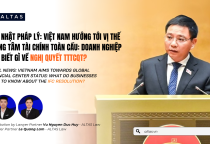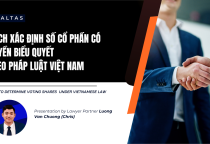This is a continuation of the previous article on "HOW TO DETERMINE BENEFICIAL OWNERS UNDER DECREE 168/2025/ND-CP ON ENTERPRISE REGISTRATION"
See link: https://altas.vn/cap-nhat-phap-ly-cach-xac-dinh-chu-so-huu-huong-loi-theo-nghi-dinh-1682025nd-cp-ve-dang-ky-doanh-nghiep
Where section C of the article raised the potential case of being unable to determine beneficial owners according to the criteria set forth by Decree 168/2025/ND-CP on enterprise registration.
Are there cases where beneficial owners cannot be determined? What should do next?
Below is an article to help enterprises have additional reference information according to ALTAS's perspective based on current legal regulations.
1. Exemption from Determining Beneficial Owners Under Decree 168/2025/ND-CP
According to regulations in Article 17 of Decree 168/2025/ND-CP on enterprise registration, cases exempted from determining beneficial owners include:
- Enterprises where the State holds 100% of charter capital: Direct ownership representatives at such enterprises are not required to be identified as beneficial owners.
- Representatives of state capital in joint stock companies and limited liability companies with two or more members according to regulations on management and investment of state capital in enterprises also do not need to be identified as beneficial owners.
Thus, cases of enterprises with full state capital or state capital representatives in enterprises will not be required to declare or determine beneficial owners.
2. If no individual can be identified according to Decree 168/2025/ND-CP criteria, who should be recorded as the beneficial owner according to international practices?
In practice, there are several typical cases considered as being unable to identify any individual as a beneficial owner according to the criteria of Decree 168/2025/ND-CP, such as:
Example 1: Dispersed ownership structure where no individual owns 25% or more of charter capital or voting shares
- A company with many small shareholders, each owning less than 25% of charter capital/voting shares.
- No individual has actual control/dominance rights (e.g., no right to appoint majority of Board of Directors members, no agreements, etc.).
- Therefore, no individual can be identified who meets the ownership or control criteria to serve as beneficial owner.
Example 2: Companies owned by investment organizations or funds
- Companies owned by one or more investment organizations, investment funds, or other legal entities, where capital ownership is widely dispersed or managed by these organizations on behalf of many individual investors.
- Information about ultimate individual owners or controllers is unclear or cannot be determined due to the complexity of the investment structure.
- Unable to identify any specific individual with actual control rights or owning more than 25% of charter capital/voting shares.
Example 3: State-owned enterprises or state-capital companies
- Enterprises where the State holds 100% of charter capital or majority of charter capital.
- State capital representatives are not considered beneficial owners under individual ownership criteria.
- No individual is identified as beneficial owner under individual ownership or control criteria.
In these cases, according to guidance from the Financial Action Task Force (FATF), beneficial owners should be identified as:
- The legal representative of the enterprise or
- The highest-level manager (e.g., Director, General Director) of the enterprise.
This measure aims to ensure there is an individual responsible for transparency regarding ownership and control of the enterprise when beneficial owners cannot be determined according to ownership or actual control criteria, to ensure transparency and accountability.
- This aims to ensure at least one individual is responsible for transparency regarding ownership and control of the enterprise when beneficial owners cannot be determined according to ownership or actual control criteria.
- The legal representative is the person legally recognized to represent the enterprise in legal transactions and is responsible before the law.
- This is a last resort measure applied when no individual beneficial owner can be identified according to quantitative or qualitative criteria for ownership and control.
This is common guidance applied in many countries and consistent with recommendations from the Financial Action Task Force (FATF).
Note:
- For public/listed companies, if beneficial owner information has been publicly disclosed, record the publicly disclosed individual as the beneficial owner.
- Recording the legal representative as beneficial owner should only be a last resort when no individual with actual ownership or control of the enterprise can be identified.
3. Some unclear points when determining beneficial owners according to the criteria of Decree 168/2025/NĐ-CP on business registration
Criteria for determining beneficial owners of enterprises according to Decree 168/2025/NĐ-CP:
"The beneficial owner of an enterprise with legal personality (hereinafter referred to as the beneficial owner of the enterprise) is an individual who meets one of the following criteria:
(i) An individual who directly owns or indirectly owns from 25% of the charter capital or 25% of the total voting shares or more of the enterprise;
(ii) An individual who has the right to control the approval of at least one of the following matters: Appointment, dismissal or removal of the majority or all members of the board of directors, chairman of the board of directors, chairman of the members' council; legal representative, director or general director of the enterprise; amendment and supplementation of the enterprise's charter; change of the company's management organizational structure; reorganization, dissolution of the company.
An individual with indirect ownership as stipulated in (i) is an individual who owns from 25% of the charter capital or 25% of the total voting shares or more of the enterprise through another organization".
When examining the wording that stipulates "Individual who directly owns" or "indirectly owns," it is unclear whether the intention here is:
- to consider only separately each form of "direct" or "indirect" ownership; or whether both "direct" and "indirect" must be considered together?; and
- to determine "individual with controlling rights" through multiple layers of intermediate legal entities, not just considering that individual's ownership ratio in the final enterprise (actual control through indirect companies).
 Consider the below example of determining the beneficial owner of Hotel AB Company:
Consider the below example of determining the beneficial owner of Hotel AB Company:
.jpg)
Based on the outlined chain of ownership, Hotel AB Company must declare/register its beneficial owners. Thus, Hotel AB Company shall investigate who directly owns or indirectly owns from 25% of the charter capital or 25% of the total voting shares or more of the company. The Hotel AB Company must also investigate whether there are persons at the end of the chain of ownership which, through other means, controls the company.
The calculation of the beneficial owners will be as follows:
- George directly owns 25 % of Hotel AB Company and is therefore a beneficial owner.
- Poul indirectly owns (0.19*0.51)*100 = 9.69 % of Hotel AB Company and is therefore not a beneficial owner.
- Charlie directly owns 15 % and indirectly (0.8*0.3*0.51)*100 = 13.24 %. Combined, Charlie owns 15 % + 13.24 % = 28.24 % of Hotel AB Company and is therefore a beneficial owner. (*)
- Susanne indirectly owns (0.2*0.3*0.51)*100 = 3.06 % of Hotel AB Company and is therefore not a beneficial owner.
- Rachel indirectly owns (0.51*0.51*0.51)*100 = 13.27 % of Hotel AB Company and is therefore not a beneficial owner. (**)
It is not in all situations where the determination upon criteria introduced by Decree 168/2025/ND-CP could give a complete and fulfilling answer. For this reason, a concrete assessment should be made in all cases to investigate whether there are other means by which a person de facto is a beneficial owner.
(**) Let’s analyze Rachel’s scenario again: According to the presumption, she owns 13.27% of Hotel AB Company, and therefore, she is not considered as a beneficial owner. However, Rachel has a controlling influence in all the underlying companies with 51% of the ownership, and through this, Rachel can exercises control rights against the Hotel AB Company. This implies that Rachel should also be designated as a beneficial owner. Therefore, it is important to make a concrete assessment of the ownership structure and not solely rely on the presumption principle.
(*) Regarding Charlie's situation: if only counting the direct ownership portion of 15% or the indirect ownership portion of 13.24% separately, then he would not be a beneficial owner. But if we combine both the direct and indirect portions, then Charlie would meet the criteria to be determined as a beneficial owner.
However, current regulations on beneficial owners in Vietnam still have many unclear points, and state agencies will provide more specific guidance on this issue in the near future.
How can ALTAS assist?
ALTAS LAW provides comprehensive legal and accounting/tax service packages designed to seamlessly support during this transition period:
-
Accounting and Tax Services: We provide accounting and tax services to help businesses manage financial impacts, including tax planning, tax finalization, tax audits, and tax refund support.
-
Licensing & Regulatory Compliance: We will meticulously review existing licenses, advise on necessary amendments or renewals, and guide through the licensing/approval process. Our team will also ensure the enterprise complies with all relevant regulatory changes.
Please feel free to reach us via email contact@altas.vn to discuss your specific concerns and explore how we can navigate these reforms successfully.
--
Written by: Mr. Luong Van Chuong (Chris) – Partner Lawyer at ALTAS Law
Date: 09/07/2025
Copyright © 2025 ALTAS LAW. All rights reserved. Ownership: This document and the content expressed therein (the Document) are proprietary resources owned exclusively by ALTAS LAW (i.e., ALTAS LAW, ALTAS CORP and member companies). Use of this Document does not itself create any contractual relationship or any attorney/client relationship between ALTAS LAW and any party. Disclaimer: All Documents are for informational purposes only and may not reflect the latest legal regulations. All summaries of laws, regulations and practices are subject to change. This Document is not provided as legal or professional advice for any specific issue. The Document is not intended to replace consultation with (and compliance with) detailed provisions of any applicable laws, rules, regulations or forms. Clients are advised to seek legal counsel before deciding to take or not take any action based on information stated in the Document. ALTAS LAW and its editors and authors do not guarantee the accuracy of the Document and disclaim any responsibility to any party regarding their actions based on all or any part of the Document. The Document may contain links to external websites and external websites may link to the Document. ALTAS LAW is not responsible for the content or activities of any such external websites and disclaims all responsibility related to the content or activities of any external websites. Note: results achieved in the past do not guarantee similar results in the future, each case has different characteristics.









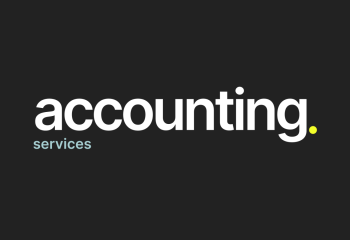

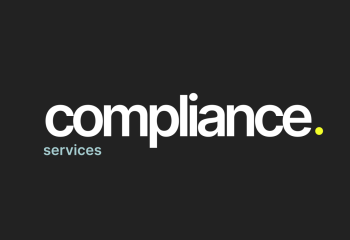


.png)
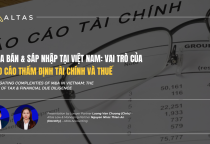
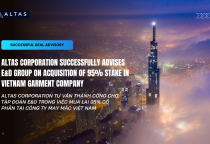
![[LEGAL UPDATE] WHAT TECHNOLOGY SHOULD BE DEPLOYED BY NOTARY OFFICES FOR FULFILMENT OF PERSONAL DATA PROTECTION OBLIGATIONS? [LEGAL UPDATE] WHAT TECHNOLOGY SHOULD BE DEPLOYED BY NOTARY OFFICES FOR FULFILMENT OF PERSONAL DATA PROTECTION OBLIGATIONS?](thumbs/210x144x1/upload/news/legal-update-j-jan2025-2-5840.png)

![[LEGAL UPDATE] KEY HIGHLIGHTS OF THE NEW LAW ON NOTARIZATION 2024 [LEGAL UPDATE] KEY HIGHLIGHTS OF THE NEW LAW ON NOTARIZATION 2024](thumbs/210x144x1/upload/news/legal-update-j-jan2025-6-9279.png)
![[LEGAL UPDATE] ELECTRONIC IDENTIFICATION FOR FOREIGNERS WITHOUT TEMPORARY RESIDENCE CARDS IN VIETNAM [LEGAL UPDATE] ELECTRONIC IDENTIFICATION FOR FOREIGNERS WITHOUT TEMPORARY RESIDENCE CARDS IN VIETNAM](thumbs/210x144x1/upload/news/legal-update-j-jan2025-5-5270.png)
![[LEGAL UPDATE] TRANSITIONING TAX IDENTIFICATION NUMBERS TO PERSONAL IDENTIFICATION NUMBERS FROM JULY 1, 2025: ROADMAP AND PRACTICAL NOTES [LEGAL UPDATE] TRANSITIONING TAX IDENTIFICATION NUMBERS TO PERSONAL IDENTIFICATION NUMBERS FROM JULY 1, 2025: ROADMAP AND PRACTICAL NOTES](thumbs/210x144x1/upload/news/legal-update-j-jan2025-3-6884.png)
![[LEGAL UPDATE] CIRCULAR 03/2025/TT-NHNN - A NEW LEGAL FRAMEWORK FOR INDIRECT INVESTMENT ACCOUNT [LEGAL UPDATE] CIRCULAR 03/2025/TT-NHNN - A NEW LEGAL FRAMEWORK FOR INDIRECT INVESTMENT ACCOUNT](thumbs/210x144x1/upload/news/legal-update-j-jan2025-2-2494.png)

